Uruguayan Naval Aviation

INTRODUCTION
Originally written in the early 2000s, this article explores the operation of the Beechcraft B200T Super King Air aircraft, Armada 871, of the Uruguayan Naval Aviation. Recently, the content and images have been updated to reflect the ongoing service and advancements made to the aircraft. Armada 871 has been a reliable asset for the service, providing versatile aerial support for a range of maritime operations. During 2013, a second B200 (Armada 872) was procured on the civilian market and added to the fleet to operate alongside its elder brother, further strengthening the force capabilities and has since undergone significant upgrades. For more details about Armada 872 please see the brief at the end of this article.
For an extensive image gallery about these aircraft, please visit this link: https://airpressman.com/beechcraft-b-200t-b-200-image-gallery-aviacion-naval-uruguaya-uruguayan-naval-aviation/
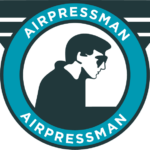 ©Ernesto Blanco Calcagno/www.airpressman.com
©Ernesto Blanco Calcagno/www.airpressman.com
MARITIME PATROL SUPER KING AIR
Flying at 50ft and 180kt over the River Plate, our view from the cockpit gave us a perceived effect of engulfing its muddy waters into the belly of our maritime patrol dragon, the Beechcraft B200T Super King Air of the Uruguayan Naval Aviation (Aviación Naval Uruguaya – ANU). “We have a surface contact, Señor” called the radar operator from his mid ships console to the two pilots , followed by a track and time to intercept the target. A gentle left bank and with the River Plate shores of western Uruguay behind we set a southerly heading towards our neighbor’s (Argentina) waters, staying on the deck at 50ft to avoid detection.The afternoon summer sun behind us bathed our practice target in golden light tones: a ferryboat, inbound to the Argentine capital Buenos Aires. We proceeded head on to visually inspect the fast cruising catamaran, sailing close to 50kt, the ideal target to “buzz” over. Drawing closer, the Australian built ship outline warped from a distant spec to filling our windscreen now, our pilot pitched up a notch, clearing the ship’s structure, and waved with his right hand. The farewell from Uruguayan waters with a fly past by the world’s first armed and “navalised” Super King Air, tail number Armada 871.
This aircraft is based at Base Aeronaval 2 – BAEN 2 – “Capitán C/C Carlos Curbelo” (Naval Air Station 2) adjacent to Laguna del Sauce International airport, near resort of Punta del Este (Maldonado province) on eastern Uruguay. Armada 871 is part of the Escuadrón de Exploración y Antisubmarino (Exploration and Anti-Submarine Squadron) where she serves alongside a younger B200 bought in Switzerland in late 2012 (more details at the end of this feature).
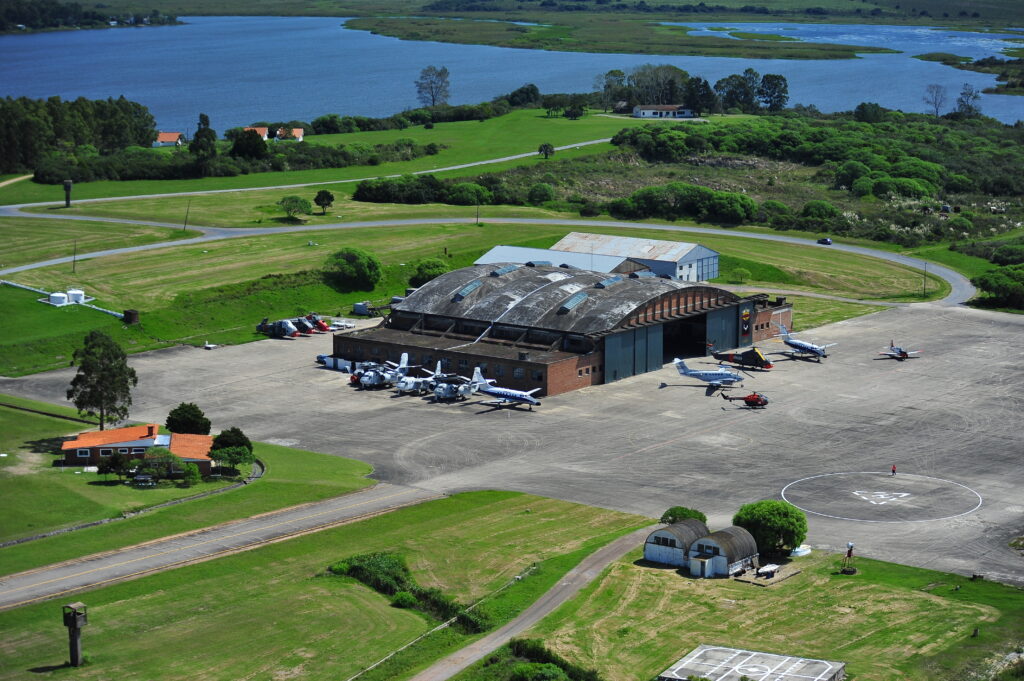

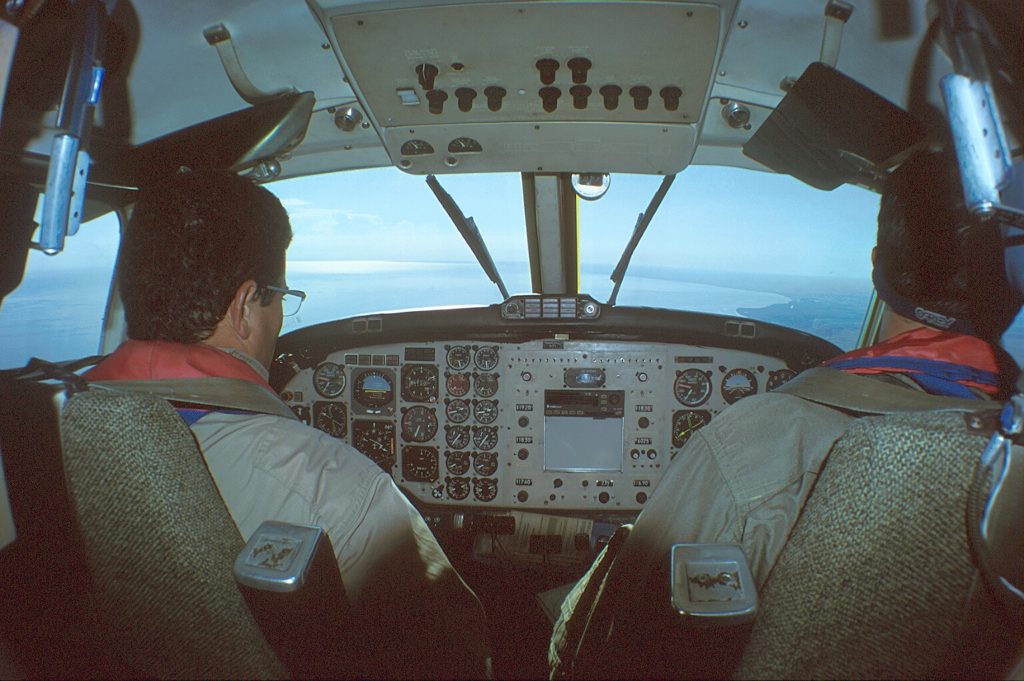
THE ORIGIN: BEECHCRAFT MARITIME PATROL AIRCRAFT DEMONSTRATOR (MAP)

This Beechcraft Super King Air is the larger brother to the popular US built King Air model 90, celebrating its 61st birthday this year. The twin turboprop first flew from the Beech Field runway in Wichita, Kansas in January 1964 and was revolutionary for its time. It allowed personal and business users to operate a single-pilot, turbine-powered, pressurized, air conditioned and heated aircraft soon gaining a reputation as a “go anywhere, do anything aircraft”. Approximately 6600 King Airs were built and production has not halted since 1964. As a further accomplishment, all branches of the US military operate some model of King Air as do services the world over for electronic surveillance, ambulance, light transport duties and maritime patrol; in the United Kingdom the RAF (Royal Air Force) utilized the type as an advanced, multi-engine pilot trainer by No 45(R) Squadron, which is part of No 3 Flying Training School based at RAF Cranwell until 2017 (to be replaced by Embraer Phenom 100 jets)

Armada 871 started life in 1978 on the US registry as N2067D (c/n BT-04) as a maritime patrol derivative of the King Air 200 series twin turboprop. It was the factory demonstrator for the Beechcraft Aircraft MRS (Medium Range Surveillance) concept (Raytheon bought Beechcraft in 1980 and the latter is now part of Textron Aviation) and designated as B200T; the T stands for “tactical”, signifying its role as a versatile, mission-oriented aircraft for military use.The Aviación Naval Uruguaya bought the aircraft to assist its Grumman S-2A Trackers and had it delivered on November 27, 1980. Of the five Trackers – three S-2As and two S-2Gs – that saw service with the force, one of the S-2Gs, Armada 854, is in storage and until recently could be returned to a flying condition at short notice should the need arise; however presently there would be no qualified pilots on then type! The B200T is powered by two 850 shp (634 KW) Pratt & Whitney PT6A-41, fitted with a new T-tail, tapered outer panels wing (Naca 23018 – also fitted on the US Army C12s) and streamlined 41.63Impgal (50USgal) wing tip tanks for increased range and endurance. The total fuel capacity of 541.23Imp gal (650US gal) provides a range of 1600nm or to remain on station for more than eight hours, one and a half hour longer than civilian models.
MODIFICATIONS AND WEAPONS

Further factory modifications included a maritime communications suite (VHF/FM/HF), VLF (OMEGA) navigation system, three- bladed Hartzell props with auto feathering system, with the all metal airframe being protected from salt and sea air by a corrosion polyamide process. A reinforced undercarriage with large main tyres (tubeless 75psi 22 x 6.75) was fitted and a fairing under the fuselage accommodating vertical photographic equipment for reconnaissance and a ventral airdrop hatch to launch survival/rescue equipment. Two large dome-shaped observation windows were fitted on either side of the aft cabin giving the aircraft the looks of a two-eyed monster. The external wing sections have been toughened to install two underwing hardpoints to support loads of up to 140lb (63kg) per station. These can carry a variety of weapons including M30 100lb (45kg) general purpose bombs, MK23 practice bombs (eight can be fitted on a Mk47 bomb rack), an FN Herstal 7.62mm TMP (twin machine gun pod) and ASPID 21/4in is a multiple rocket launcher system on each pylon (these are interchangeable with the ANU’s Beechcraft T-34C1 trainer/attack aircraft, the armed version of the Turbo Mentor). Weapons aiming is achieved by a rudimentary vertical, ball tipped, metal rod, fitted externally over the nose of the aircraft in front of the commander’s seat. The correct speed and altitude for weapons release must be flown and a reticle (grid of fine lines) on the windscreen, must be aligned with the aiming device. Weapons launch/release is a two-man operation, the co-pilot activates a CB (Circuit Breaker), the captain then selects ‘Master Arm’ switch to ‘On’ and presses the trigger on top of the control column.
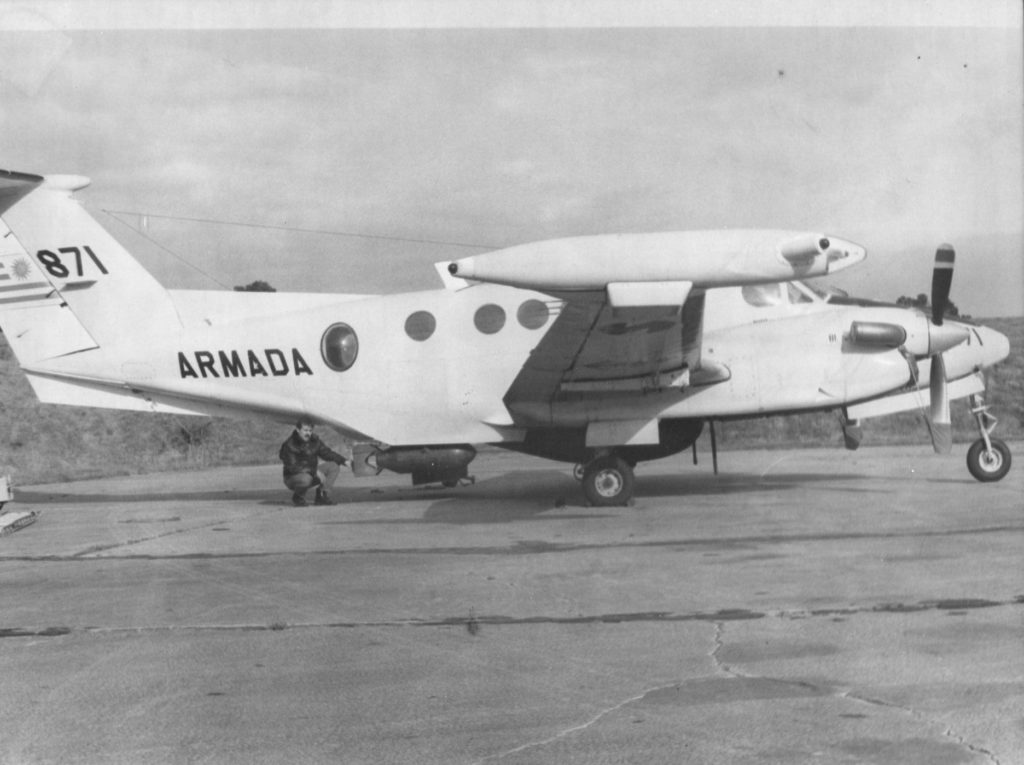


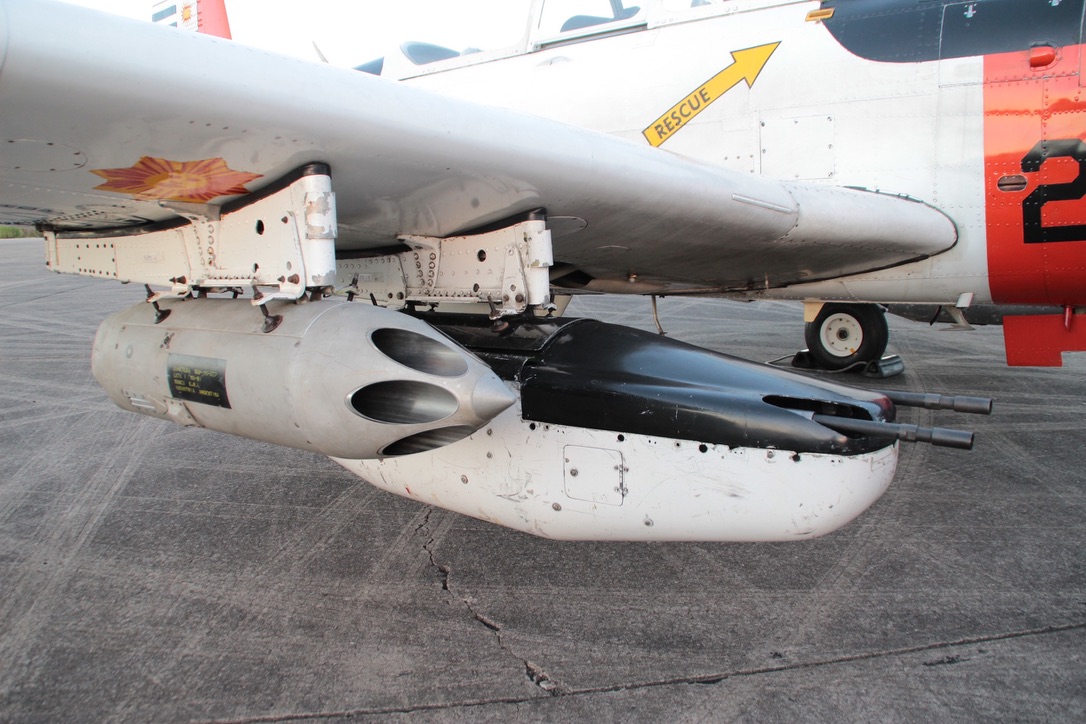
An indigenously designed electro-mechanical external weapons release can be fitted to the ventral hatch for dropping 350lb (159kg) and 500lb (227kg) AN-M64 general purpose bombs. The latter – dating from World War Two – are possibly from stocks that armed the Aviación Naval Uruguaya Martin PBM-5S-2 Mariner flying boats in the fifties. Attempts to drop these bombs from this hatch were later abandoned by the ANU! Following all these modifications, weight went up by 1500lb (682kg) above civilian versions to a mtow of 14000lb (6364kg), placing the B200T on a multiple airworthiness certification (FAR 121.187) in both normal and restricted category (the latter applies when above 12.500 lbs [5682 kg]).
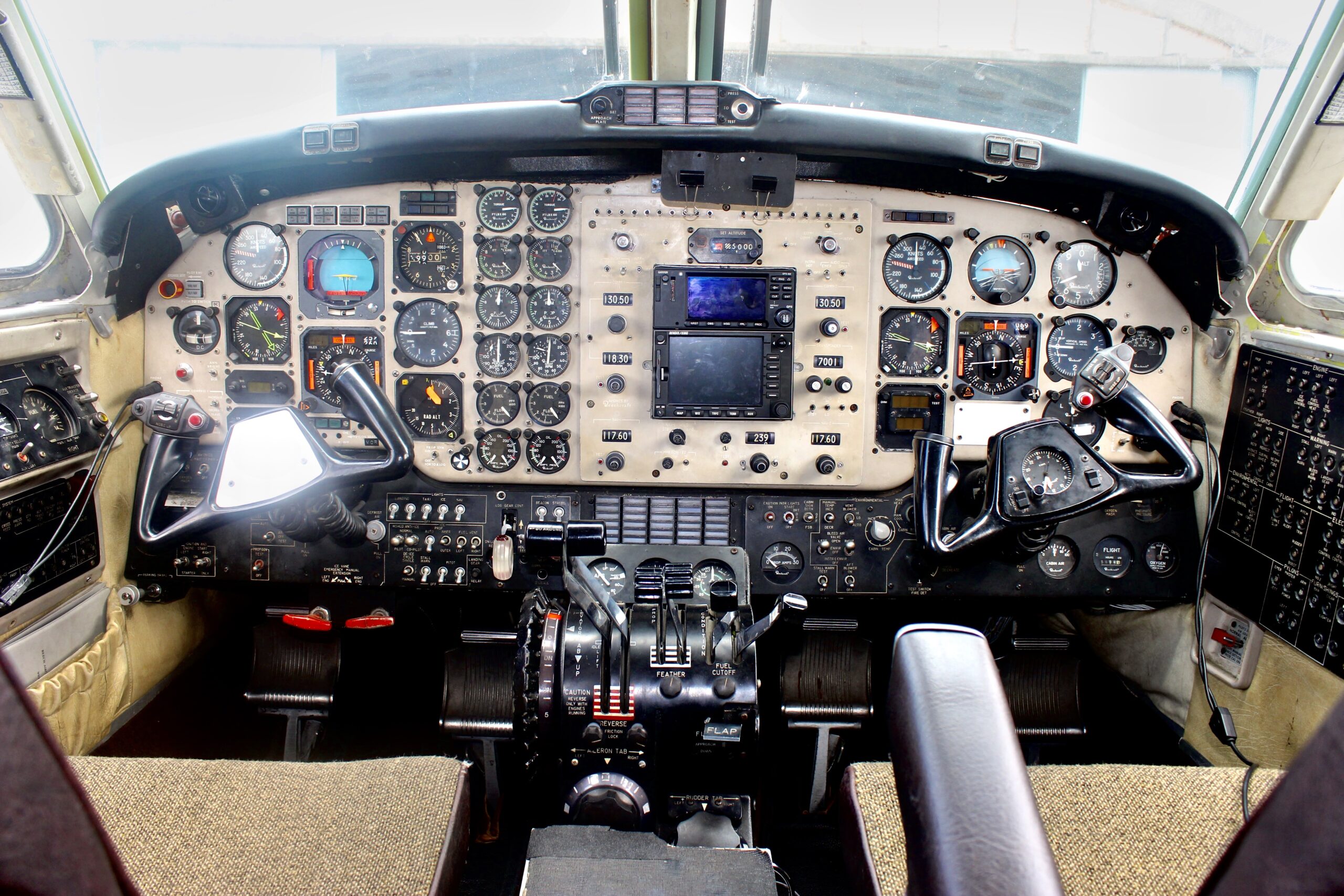
To practise weapons delivery (on oil drums targets) the B200T regularly deploys to danger areas D16, located over the Atlantic Ocean south of the port of La Paloma, and the overland D8 adjacent to the Laguna Garzón (Garzón Lake) both 20 minutes flying time east of BAEN 2. The aircraft has only once fired its weapons ‘in anger’. This was on February 26, 1995 when it was tasked to sink a decommissioned World War Two Cannon-class destroyer, the ROU (República Oriental del Uruguay) “Uruguay” (DE-1), former-USS Baron. It achieved success with two salvos of ASPID 21/4in rockets, hitting the ship below the water line.
MISSION PROFILE

Most sorties are flown with a crew of four – two pilots (the type is certified for single pilot operation) one radar operator/electronic warfare specialist and a photographer/observer. SAR operations capabilities could be further improved with adding a searchlight and the crews issued with NVG (night vision goggles). Airpressman flew several missions on the type, the first one would take us due west 100nm (185km) from Curbelo, over the River Plate up to the western port of Juan Lacaze on the shores of the River Plate. Green algae stains have been reported there and the top brass wanted video and photos of the stains for further analysis. The decomposed alga is harmful to bathers and may cause dermatitis and conjunctivitis; also affecting the local fishing industry. It was also an opportunity to sharpen the crew skills in ship detection and identification and to assist us we were joined by Corporals Víctor Olivera (radar operator) and Albin Correa (camarographer) who would be carrying such tasks along the route.
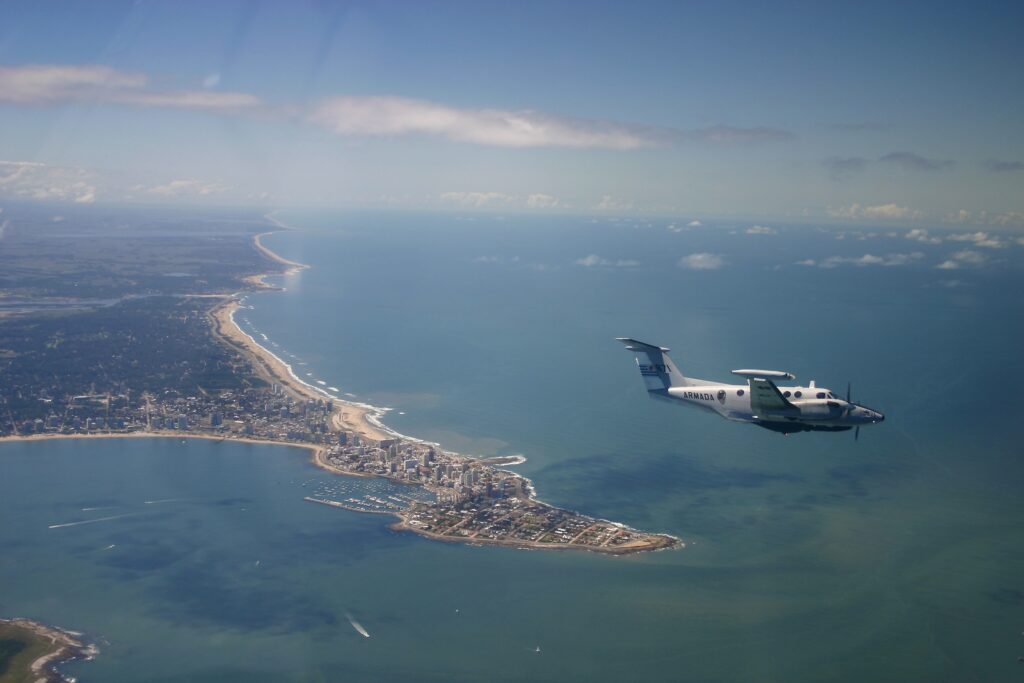
The aircraft has a 31,000 ft (9500 mt) certified ceiling, and a pressurised cabin, low noise levels, providing a fairly comfortable environment. Propeller auto feathering, Collins FCS-80 autopilot and flight director plus a WX Narco 58 weather radar, help to decrease pilot workload. Accurate navigation over large expanses of water is crucial so two GPS are installed. On departure we taxied to the 7000ft (2133mt) runway 08. In this subtropical region of the southern hemisphere the temperature of 26 degrees C for our take off was average for summer. With our 12.500lb (5700kg) weight the 100kt Vr was reached in 26secs – with a 20 knots wind at 30 degrees off the nose. At gross weight the B200T typically uses 4000 ft (1220 mt) of runway and gets into the ether 90lb lighter (40kg) – the weight of fuel allowed for start, taxi and take off. Our mission fuel was 2400lb (1088kg), sufficient for four-hour endurance, with the main tanks filled up, these are located outboard of the fuselage on each wing up to each engine nacelle. The constant humming of the PT-6s on take off was interrupted by the characteristic shrieking sound of the electrically activated undercarriage and flaps retracting (later B200s were fitted with hydraulically actuated landing gear)
There are five cabin seats, including a belted one doubling as a toilet (without partition as on civilian models) certified for passengers during takeoff and landing. At the tactical station, the operator has two large CRT displays, PC style keyboard to operate radar surveillance systems (more about it later) mission run time and duplicated navigation flight instruments as whilst targeting he could control the aircraft, via the autopilot (this task is usually carried out by an officer pilot)

Leveling off at 5000 ft, Hugo sets 1700 rpm for the cruise giving us a 477lb (202kg) fuel flow per engine as we follow a westbound GPS route parallel to the coast towards the nation’s capital Montevideo. With a 15kt tailwind our GS was 190 kt (175kt) thus after twenty minutes we approached Montevideo. Whilst inside Carrasco CTR (the country’s main airport) within 8nm (15km) south from their VOR, the GPS indicates we are at 36nm (67km) from the contamination zone. A few fishing trawlers carried out trapping manoeuvres and cargo ships waited to alight their loads.
However one of the main obstacles to sea navigation was right under our aircraft: Flores Island, six miles off the coast of Montevideo with its old lighthouse and many mysteries, having served as a quarantine station for European immigrants in the 1800s, a prison early in the 20th century and even as bombing range for the Navy. South from the island lays the Banco Inglés, a sand bank with dozens of shipwrecks. Such vast amount of metal is deposited underwater here that the navy practised the art of submarine hunting by aiming their S-2 Trackers’ MAD (Metal Anomaly Detectors) to the sand bank as they overflew it during high tide!

THE RIVER PLATE
The Río de la Plata, treacherous to navigate due to its natural hindrances (deep, rocky shallow bottom, sandbanks, stony peninsulas and islands) has through the centuries acquired a reputation of a sailor’s grave (the inception of the GPS soon ended that status!) With a surface of 20.950 square nm (38.800 square km) and the widest mouth of any river on earth (125 nm/230 km) the waters of the estuary, plus its oceanic extension, are home to the ANU’s aircrews whose main tasks are to protect against illegal fishing, narco traffic detection, environmental/pollution control and SAR duties. It was here in this river during the dawn of WW2 in 1939, following the Battle of the River Plate, that Nazi Germany’s pocket battleship Admiral Von Graf Spee was sunk by her captain after being damaged by Royal Navy ships.
Approaching Juan Lacaze, isolated green stains appeared on the water. Hugo begins a step descend for closer view down to 50 ft (15 mt) at 180 knots. The aircraft felt stable solid with crisp handling supplied by the mechanical control surfaces. Flying being done manually, the autopilot is disengaged below 200 ft (61 mt) via a paddle switch on the control column or by operating the electric trim. The result: truly interesting hands-on, low flying an upward looking, scary anglers! Albin got busy filming the algae spread whilst Victor contacted coast guard posts passing on location details to warn bathers.

ESM (Electronic Support Measures) & ELINT (Electronic Intelligence)
Armada 871 two main systems are the Telephonics AN/APS-128 surface surveillance/weather radar housed on a ventral radome and the Israeli built Elisra AES 210 passive listening ESM (electronic-support-measures) equipment, both systems being capable of 360 degrees search patterns. To diminish the negative effects of the turbulent air-flow generated by the AN/APS-128 ventral radome, fins at either side of the lower fuselage were installed. Apart from its tactical value, the system can also be used as weather radar, having a range selection of 25/50/125nm (46/92/231km respectively).
The Elisra AES/210 was fitted in Uruguay in 1993 (Gonzalo and Hugo trained in electronic warfare in Israel) having flat rectangular sensors placed below the wingtip tanks and amplified the capabilities of the aircraft. The compact, lightweight system serves a range of applications, including air, sea and land surveillance, ELINT (Electronic Intelligence) information gathering, targeting and location finding of enemy radars and platform self-protection. It automatically detects, measures and identifies radars -down to the name of the ship transmitting the signal – (ground-based and ship borne weapon systems) calculates their location and provides radar warning to aircraft pilots.
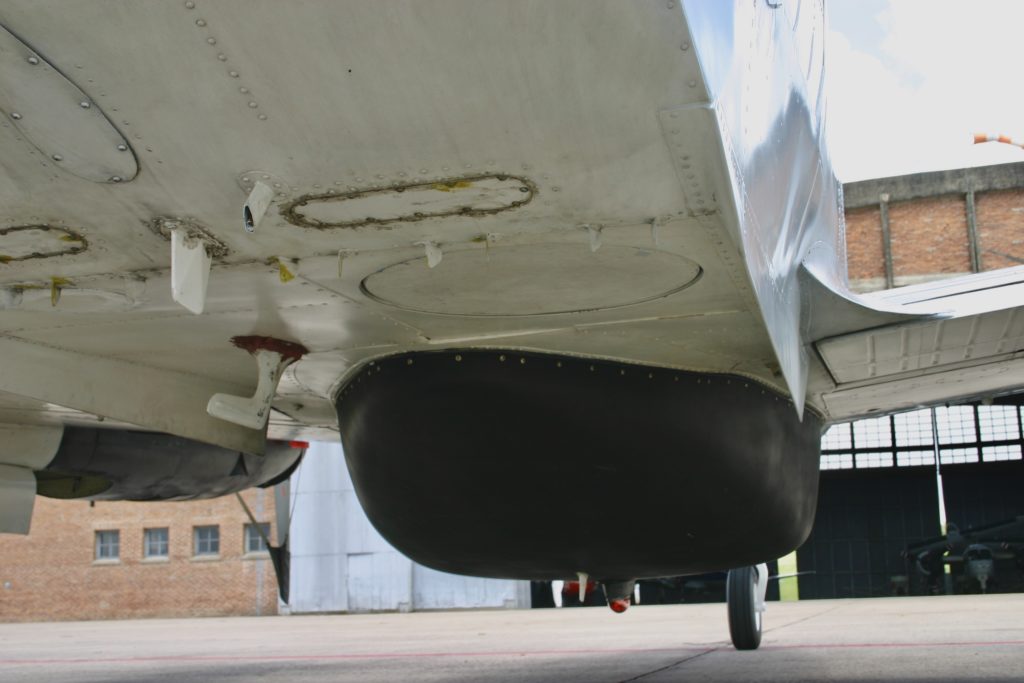
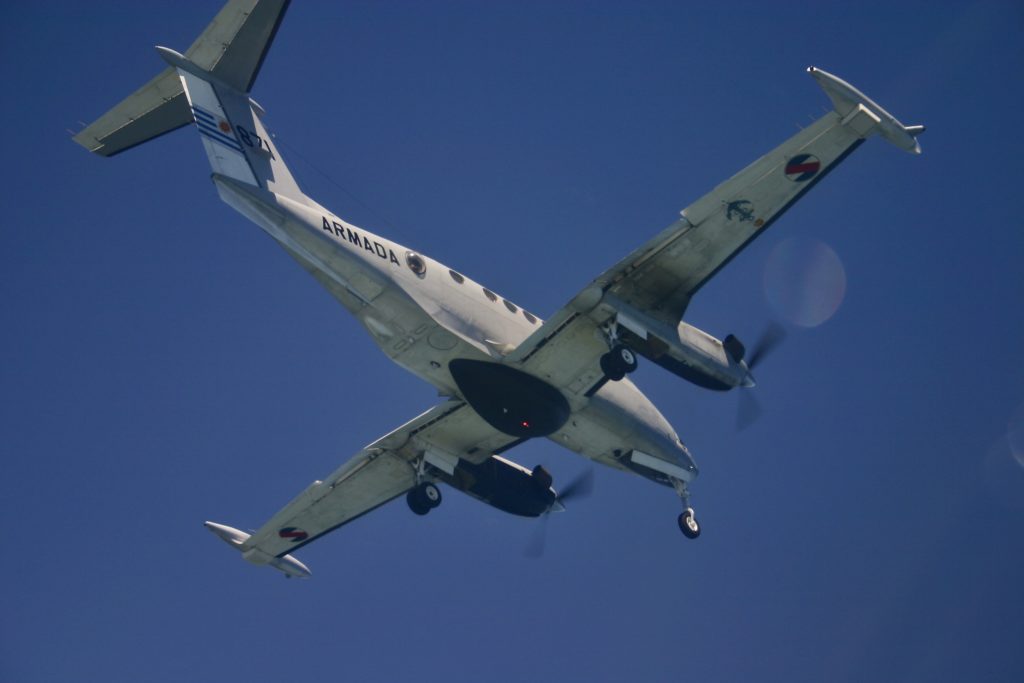

A data link allows the position and speed of vessels to be transmitted to surface stations and Uruguayan Navy frigates, effectively providing the latter with an over the horizon attack capability. Intercepted emitters are presented to the operator on an interactive colour graphic display – also records and stores data enhancing the probability of future detection supported by a database of known hit/signals (a bonus as Elisra provided an empty one).

INTERNATIONAL OPERATIONS & SAR

For its search and rescue (SAR) role a Skymaster II Unipack ten-man life-raft can be dropped from the under-wing pylons or from a hatch in the floor of the cabin. SAR missions are normally flown at heights of between 300-500 ft (90-150m) in daylight and around 3,000ft (915m) at night. The life-raft can be dropped at a height of 75 to 250ft (23 to 76m) and speeds from 60 to 240kt (110 to 440 km/h). Night operations are limited as the cockpit is not NVG (night-vision goggle) compatible and the aircraft lacks a search light, however, a flare launcher can be attached to the under wing stations.

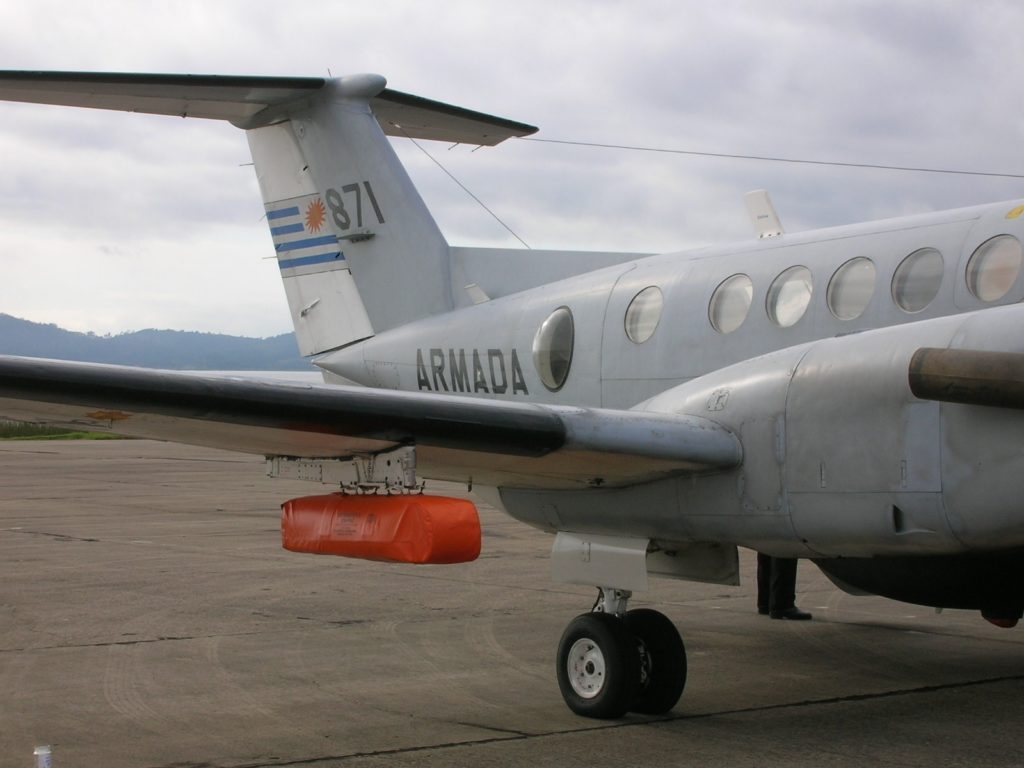
The B200T was a regular participant of the Atlantic phase of the joint naval war games Unitas, carried out yearly amongst the US and Latin American naval forces, as well as Salvex (a liaison exercise with Argentina and Brazil SAR coordination centres) and Polex, a pollution control exercise. On a previous Unitas exercise, Armada 871 was positioned to Comandante Espora NAS in Trelew, home base of the Argentine Navy Escuadrilla de Vigilancia Marítima (Maritime Surveillance Squadron) equipped with Lockheed P-3 Orions and Beechcraft B200M (the latter, kitted up with Uruguayan Naval Aviation assistance, to mirror the B200T capabilities). The aircraft backed up a team of surface and air assets, on a “Free play” -simulation of real threat exercise- tasked to identify foe surface units and pass on their location to friendly forces. Attacks to opposing surface ships by Argentine navy Super Etendard and Aermacchi 329 jets were carried out guided by ANU’s crews, enemy position reports from GPS readings provided to the attack planes. No INS kit was fitted to 871 during the early days of this aircraft as a Omega control unit was visible on the radar operator’s console. The VLF/OMEGA system is no longer available, an old station in Argentina, (plus eight stations on the southern hemisphere) and a total 18 worldwide, decommissioned by their creator and former largest user the US Navy. Other tasks included SAR and ship formation photography with seven hour long patrols flown at 200kt cruising speed, up to 160nm (296km) from the coast at altitudes between 1000 to 5000 ft (as optimum altitude for radar utilisation for the threat is an important consideration.

A serious SAR incident occurred on August 5th, 2000 when a Panamanian registered freighter, the “Skyros”, collided against the ROU 32 “Valiente”, sinking the Uruguayan Navy Kondor I class minesweeper in South Atlantic waters. Armada 871 was first at the scene, becoming a communication platform reporting on wreckage location, allocating flight levels and information to all the rotary wing elements dispatched both by the ANU and the Fuerza Aérea Uruguaya (FAU – Uruguayan Air Force) Naval HQ and civilian ATC. This conduct was extremely important to avoid further accidents, controlling the natural human reaction to rush and help, without a proper action plan, during disastrous times. Tragically, eleven crew members died on the “Valiente”. Hugo Martini was in command of Armada 871 and received a medal for his actions.
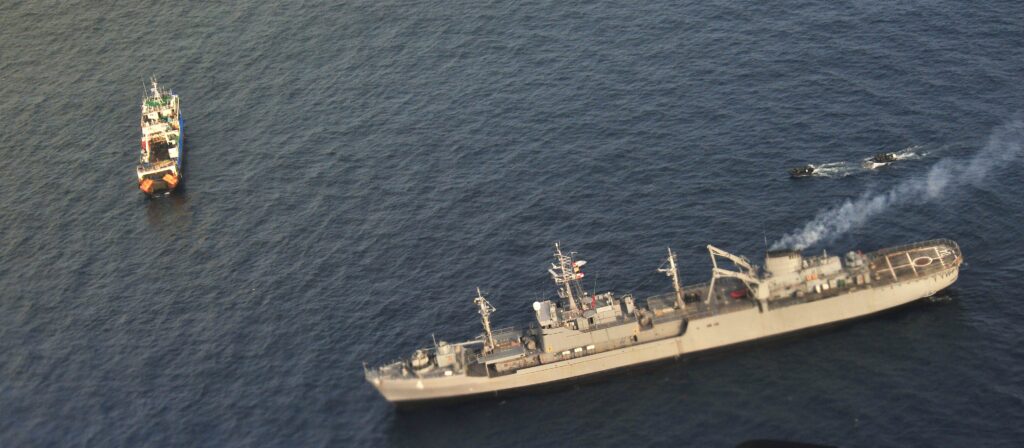
Uruguay’s main headache in the maritime arena is the custody of its EEZ (Economic Exclusion Zone) where it estimates that it loses approximately £40 million ($80 million) per year through illegal fishing in its waters. The problem is now more complex as permission to increase its EEZ from the 200 nm (370 km) to 350 nm (648 km) from its coastline was approved the United Nations Commission on the Limits of the Continental Shelf (CLCS) in 2016. Thus Uruguay has become a nation having more extension over water than land territory! More assets will be needed to carry out duties in the environmental control of its waters, observing and photographing ships illegally discharging harmful substances, as well as SAR duties.
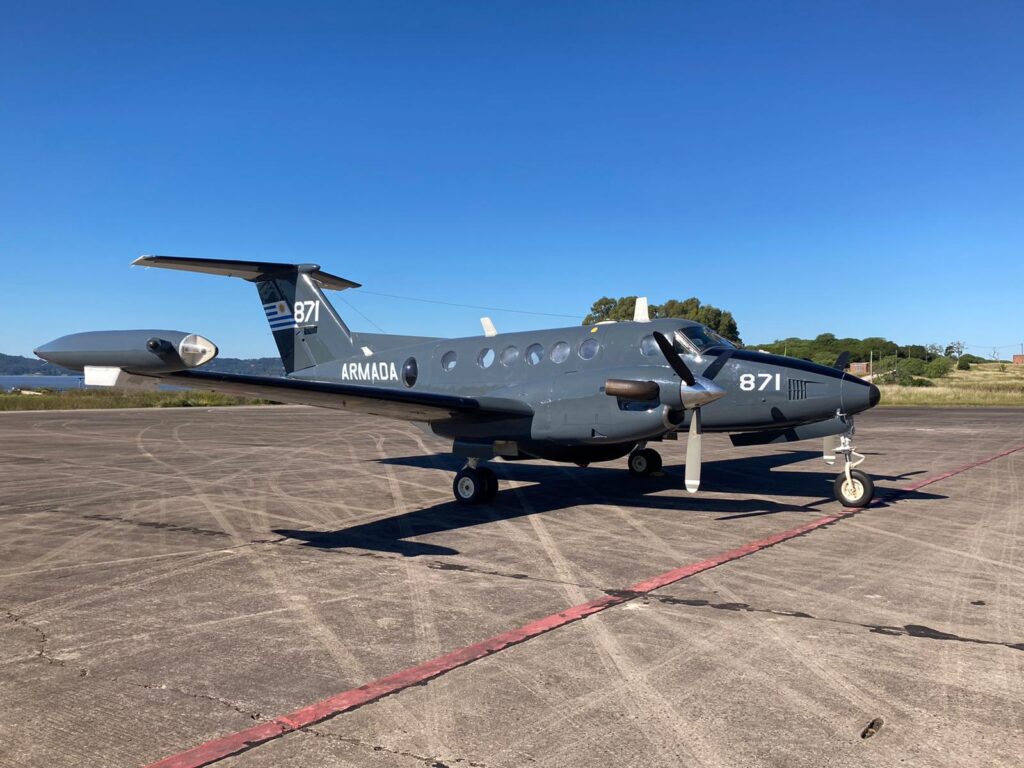
Landing back at Curbelo the three bladed Hartzell props brought us to a speedy slow pace with their pitch at minus 9 degrees. Its low stall speed (77 kt with full flap) and low- pressure tyres, makes it suitable for unprepared fields. After more than five decades of King Air service, the type is ubiquitous, proven, and extremely reliable. It is easy to operate, maintain and spares are plentiful. In light of the service phasing out from duty of the old antisubmarine S-2s Trackers, the service has lost its anti-submarine warfare (ASW) capabilities. These could be reinstated, ushing Armada 871 as a platform, by equipping it with an ASW suite and sonobuoy launcher. Its crews are still taught the art of ASW, and tactics are practised in Uruguayan- built simulators at the Escuela de Aviación Naval (Naval Aviation School) at BAEN 2.
Since 1980 Armada 871 has been an undeclared “flagship” and ambassador for the Uruguayan Navy. The plane is so versatile that has at times been a presidential aircraft, a visitor to Antarctic stations and has save many lives when used in the SAR role having achieved over 9000 flying hours. In short an extremely able and gallant defender of the Plate!
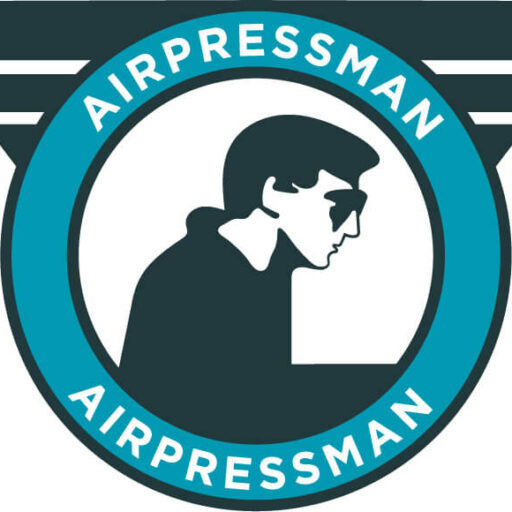



REINFORCEMENTS – Armada 872: The younger brother!

The Aviación Naval Uruguaya has bought its second Beechcraft B200 Super King Air. The aircraft – previously a Swiss Government aircraft and of late US registered (N200NA) – was obtained from the firm Inter-Kommerz for U$1.4m. The aircraft (construction no. BB-1079) arrived in Uruguay on January 8, 2013 at 15:30 hours (UTC -2) at “Capitán C/C Carlos Curbelo” Naval Air Station (Base Aeronaval 2 – BAEN 2) adjacent to Laguna del Sauce International airport, near the resort of Punta del Este is now attached to the Escuadrón de Exploración y Antisubmarino (Exploratory and Antisubmarine Squadron).Designated as Armada 872 it bears similar characteristics to the service single B200T Super King Air, titled Armada 871 and will mostly be utilised for pilot training and transport, allowing the older B200T, fitted with a full suite of electronic detection equipment, to fulfil its main task as a maritime patrol aircraft (MAP).The ANU awaits financial resources in the medium term to equip Armada 872 with electronic equipment to assist in the surveillance and ESM roles.
Enhanced Surveillance Capabilities for the Uruguayan Naval Aviation
Fast forward to 2025 and finally Armada 872 has been equipped with maritime surveillance radar. Over the past five years, the research and development teams within the ANU have focused on improving the service’s sensors and armaments. This has led to interesting developments by combining existing knowledge and materials, generating low-cost, high-utility products. This strategy avoids significant expenses on similar products that would be far more costly. Following this in-house significant engineering analysis it was decided to install radars originally designed for ships but modified for airborne use. These modifications have yielded excellent results, enabling detections beyond 60nm for medium to small vessels, and even further for larger ships. Armada 872 – initially built for civilian use – was structurally modified, and the installation of smaller size ventral radome to house the radars were carried out during its last ten year overhaul in 2023.

On the older B200T (Armada 871) the ancient Telephonics AN/APS-128 surface surveillance/weather from the early 80s housed on a ventral radome was also replaced; as it has become extremely hard to obtain spare parts. These new capabilities, combined with the installation of Automatic Identification System (AIS) on all aircraft, considerably boost detection abilities. AIS is a automatic tracking system that uses transceivers on ships to broadcast information about themselves, as the core function for maritime patrol is to passively listen to the AIS broadcasts from vessels below. This information is then displayed to the crew on mission management systems and radar displays; and for that purpose new forward facing crew stations and consoles have been fitted on both aircrafts.


Additionally, Electro-Optical/Infrared (EO/IR) Cameras (brand undisclosed) have been acquired. When utilised alongside data provided by the IAS, the cameras can be guided to specific vessels or targets of interest for a discreet visual inspection or closer observation, even before the vessel is visually acquired. This new suite serves as a powerful tool for search and rescue operations (SAR) and a whole range of military tasks and was a requirement long overdue to modernise the force.

A significant added value is that the modifications were performed by Uruguay’s own naval aviation maintenance teams, representing a saving of at least U$3m for both aircraft. While these may not be the most powerful or technologically advanced radars, the savings are huge for a force with a low budget when compared to similar performance systems currently on the market.

Meanwhile, the next five-year period the Aviación Naval Uruguaya expects to see the incorporation of at least one more AB412HP helicopter, identical to the two already in service, and a further B200 to complement and enhance existing capabilities. Furthermore, more T-34C units are anticipated for both instruction and as a supplement to coastal patrols, coastal security, search and rescue, and subsidiary tasks. In this regard, work is already underway on potential substitutes for a model that will be celebrating 50 years of service in our country by the end of the current five-year period.

Aviación Naval Uruguaya (ANU) B-200T Technical Specification:
Engines: 2 x Pratt & Whitney PT6A-41 (850 Shp/2230 ft lb)
Propellers: Three bladed Hartzell HC-B3TN-3G (VP prop) blade diameter 98.5 in. Feathered + 90 degrees – Reverse: minus 9 degrees)
Weights:
MTOW 14.000 lb
MZFW: 10.400 lb
MLW 13.500 lb
Range Profile (ISA)
15.000 ft – 272 TAS ~ 1300 nm @ recommended cruise power (1700-1800 rpm)
15.000 ft – 205 TAS ~ 1550 nm @ maximum range power
(Includes start/taxi/climb/descend + 45 min. reserves. Fuel on main, auxiliary and tip tanks.
Useful load – 1343 lbs (Mission with 2 pilots, 6 pax and 323 lbs. load or bags).
For the above mission: Max. fuel weight – 3690 lbs. Fuel loaded on main tanks + tips + aux. tank with 29 gallons each – Total fuel 550 US gallons
Full fuel – Useful load of 678 lbs. (4 pax, no bags, or 3 PAX and 168 lbs. of load/bags)
Patrol mission – 4 pax + 1 x Mk 4 raft + 6 x parachutes = 4154 lbs. – 620 gallons
Aux tanks – 64 gallons each
AIRSPEEDS LIMITS
Vr – 111 kias
Vx – 100 kias
Vy – 125
Cruise climb – 160 kias
Turbulence – 150 kias
Landing – 100% flaps – 102 kias
0% flaps – 131 kias
Va – (maneuvrering) 187 kias
Vfe – Approach 40% 200 kias
Full flap 100 % 157 kias
Vlo – Extension 181 kias = Max LG operating speed
Retraction 163 kias “ “ “ “
Vle – 181 kias
Vmca – 86 kias
Vmo – 244 kias
Mmo – 0.472 Mach
.png)
.png)
